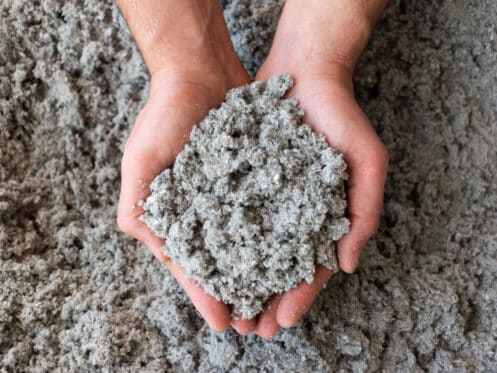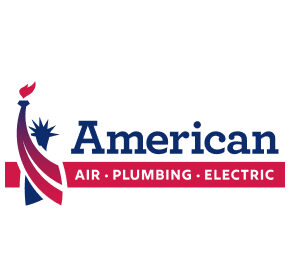Insulation is a protective barrier placed within residential or commercial buildings to prevent the transfer of heat, sound, or electricity. Its primary purpose is to maintain a comfortable and energy-efficient environment by reducing heat loss during cold weather and minimizing heat gain during hot weather. Insulation creates resistance to heat flow, commonly referred to as R-value. The R-value is a measurement of the insulation’s ability to impede heat transfer. Increased values indicate better results provided by the insulation.
Understanding Heat Transfer
Understanding how insulation works involves grasping the concept of heat transfer and the mechanisms by which insulation impedes it. Insulation works by mitigating these processes to minimize heat flow. Heat transfer occurs through three main processes.
1. Conduction
Conduction is the transfer of heat through direct contact between materials. When there is a temperature difference between two objects in contact, heat flows from the warmer object to the cooler one. Insulation materials like fiberglass, cellulose, foam, and mineral wool contain tiny air pockets that trap air molecules and hinder the movement of heat energy.
2. Convection
Convection refers to the transfer of heat through the movement of fluids. When air or water is heated, it becomes less dense and rises, displacing cooler, thicker fluid. The cooler fluid then gets heated and rises, creating a convection cycle. Insulation helps impede convective heat transfer by minimizing air movement within the insulated space.
3. Radiation
Radiation is the transfer of heat through electromagnetic waves. Unlike conduction and convection, radiation does not require a medium for heat transfer. Insulation materials reduce heat transfer by reflecting or absorbing radiant heat.
Types of Insulation Materials
Insulation materials are vital in maintaining comfortable indoor temperatures and enhancing energy efficiency in buildings. There are several types of insulation, each with unique characteristics and suitability for different applications.
Fiberglass Insulation
It consists of small glass fibers that are tightly packed together. Fiberglass insulation provides exceptional fire resistance. It also has sound absorption properties. It comes in the form of batts, rolls, or loose-fill insulation.
Cellulose Insulation
Made from recycled paper products, cellulose insulation is treated with fire retardants. It is an environmentally friendly option with good thermal and sound insulation properties. Cellulose insulation is often blown into attics, walls, and crawling spaces, providing adequate coverage and reducing air leakage.
Spray Foam Insulation
Applied as a liquid, spray foam insulation expands into a solid foam. It provides an airtight seal, minimizing heat transfer and preventing air infiltration. Spray foam insulation provides increased thermal resistance and a high R-value.
Mineral Wool Insulation
Mineral wool insulation, also known as rock wool or slag wool, is made from natural minerals like volcanic rock or steel industry by-products. It has excellent fire resistance and sound absorption properties. It is available in batts, boards, or loose-fill forms. It is commonly used in areas where fire safety and soundproofing are crucial. These areas typically include walls, ceilings, and mechanical systems.
Polyurethane Foam Insulation
Polyurethane foam insulation is a type of spray foam insulation that provides exceptional thermal performance and air-sealing capabilities. It is often used in areas where a high level of insulation is required, typically in large commercial buildings. It expands when applied, filling gaps and creating a seamless insulation layer.
Reflective Insulation
Reflective insulation is designed to reflect radiant heat, reducing heat transfer by radiation. It consists of a layer of aluminum foil laminated to a substrate material, such as polyethylene foam or bubble wrap. Reflective insulation is commonly used in attics, roofs, and walls to reduce heat gain during hot summers and retain warmth during cold winters.
Benefits of Proper Insulation
There are many benefits of proper insulation that should not be overlooked. These benefits can lead to significant financial savings and improved quality of life.
Enhanced Energy Efficiency
Insulation acts as a barrier, preventing heat transfer between the interior and exterior of a building. By reducing heat transfer, insulation helps keep the indoor temperature stable, reducing the need for excessive heating or cooling. This leads to lower energy consumption, decreased utility bills, and a minimal carbon footprint.
Increased Comfort
Proper insulation creates a comfortable living environment for occupants by providing consistent temperatures throughout the year. During cold weather, insulation traps warm air inside and prevents it from escaping, keeping the interior cozy. Similarly, in hot weather, insulation prevents excessive heat from entering the building, maintaining a cooler environment.
Noise Reduction
Insulation helps absorb and dampen sound waves, reducing noise transmission to the outside or across rooms. This is particularly beneficial for buildings located near busy streets, airports, or other noisy environments.
Moisture Control
Moisture infiltration can lead to problems such as mold growth, structural damage, and health hazards. Insulation materials with moisture-resistant properties help create a barrier against condensation, preventing moisture from seeping into the building.
Improved Indoor Air Quality
Proper insulation contributes to better indoor air quality by preventing the entry of outdoor pollutants and allergens. It acts as an effective sealant against dust, pollen, and other contaminants, ensuring a healthier indoor environment for occupants, particularly those suffering from allergies and respiratory issues.
Long-Term Cost Savings
Insulation helps lower heating and cooling expenses over time by reducing energy consumption. The cost savings can be substantial, especially in regions with extreme climates. Additionally, proper insulation can contribute to the longevity of HVAC systems by reducing their workload, resulting in potential savings on maintenance and repair costs.
Insulation Maintenance and Upkeep
Proper care and attention to the insulation in your home can help preserve its performance, extend its lifespan, and prevent potential issues that may arise over time. Here are the key maintenance tasks that you need to schedule for the insulation in your Oviedo, FL, home.
Regular Inspection
Regular inspections for your insulation help ensure any damage, wear, or degradation signs are promptly identified. It is important to inspect the insulation in critical areas such as attics, walls, floors, and basements and look for signs of moisture, mold growth, pest infestations, or physical damage like tears, compression, or gaps.
Preventing Compression
Over time, some insulation materials like fiberglass or cellulose can compress due to settling or weight, making them less effective. Adding additional insulation in your attic or crawl spaces can compensate for any compression.
Pest Control Measures
Unwanted pests like rodents and insects can damage your insulation by nesting or burrowing through it. You should regularly inspect your insulation for signs of pest activity, such as droppings, chewed materials, or nests. Consult with pest control professionals if you suspect an infestation that could compromise your insulation.
Upgrading or Adding Insulation
As building codes and insulation standards evolve, staying informed about new technologies and insulation options is essential. You should occasionally assess your insulation’s performance and upgrade or add insulation in areas where insulation may be lacking.
Contact Us
American Air, Plumbing, and Electrical stands out as a reputable HVAC contractor in Oviedo, FL and surrounding areas. We are known for our quality workmanship and are committed to customer satisfaction. We can help you determine your insulation needs along with other services, including a complete line of HVAC and indoor air quality solutions. Contact American Air, Plumbing, and Electrical for more information about your home’s insulation.


